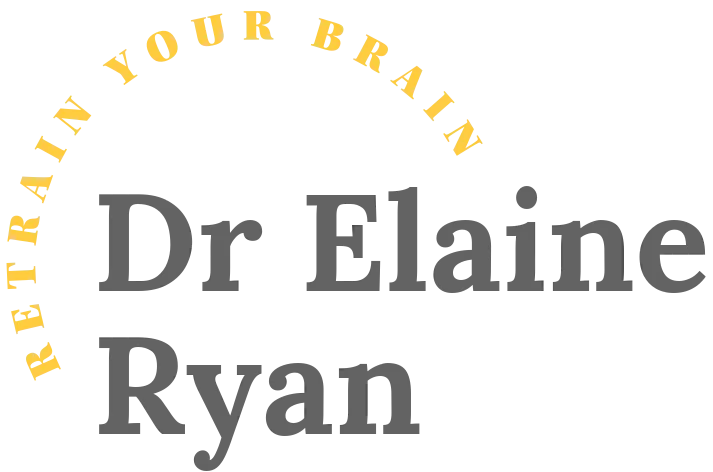This article is going to show you how to break down your experience of anxiety into smaller components that can be worked on individually.
Anxiety can cause different symptoms. For example, some people might notice the tension in their bodies. Others may see their thoughts have become very anxious. Some people experience anxiety in their behaviours, that is, things they do or cannot do.
Another way to think of this is to know that anxiety has an
- Emotional component
- Physical component
- Cognitive component
- Emotional component
- Behavioural component
Rather than seeing anxiety as something to be afraid of; if you can see it in terms of these components and understand the usefulness of anxiety, we can start looking at ways to help you when you’re feeling anxious in situations that you don’t need to.
Retrain Your Brain®

Dr Ryan’s online self-help course for anxiety
Let’s start by looking at an example where anxiety is adaptive and valuable.
I’m going to start by looking at hypervigilance. If you are hypervigilant and anxious, this could hinder your day-to-day life, but hypervigilance has an adaptive advantage.
If you’re feeling hypervigilant, you’re on the lookout for danger if something in your immediate environment will harm you; this is very useful. For example, if you’re out walking in the woods and you hear a pack of dogs barking, feeling hypervigilant makes you look around and see if you’re in any danger.
How your mind works with hypervigilance is you won’t be able to forget that you might be in trouble because if you do, you might get mauled by a dog, so rather than forget about it, you’re on the lookout searching for these dogs to see if you’re in any danger.
Let’s look at the components of anxiety in the example above, where hypervigilance and anxiety were adaptive. Then I’ll show you how to work with these components when anxiety is not helpful for you.
Example; feeling hyper-vigilant when you hear lots of barking but you can’t see any dogs.
The emotional component is where you’re just feeling very nervous.
The physical component, you can feel your heart beating faster than usual. You might get a little sweaty,
Cognitive component. You might think my goodness I’m going to get hurt
Behavioural component; scanning your surroundings looking for wild animals, walking faster or leaving your walk early.
If you were in real danger, if there were wild animals approaching all these components working together when you’re hyper-vigilant helps to keep you safe.
Hopefully, you can see how the feeling of anxiety is actually there to help you, but now I want to turn my attention to everyday examples where you feel anxious and hypervigilant in situations where you are not in immediate danger.
I want to introduce you to the idea of using worksheets and shining a spotlight on the individual components of anxiety.
I think it is necessary to do this, as feeling anxious can be all encompassing, but having a method of breaking it down into smaller components to work with one at a time, makes it seems more manageable.
Worked example, feeling anxious about giving a presentation at work next week.
You can see a worksheet in the image below that you might want to use. I have completed the sheet with a worked example, to help you understand how to complete the sheet for yourself.

Why use worksheets?
Worksheets and homework are part of CBT. Using a worksheet allows you to break your experience of anxiety into smaller more manageable chunks to work on. If you do not do this, you may be left with the overwhelming experience of stress, too paralysed by it, to do anything to help yourself and miss out on many aspects of life.
Dividing your anxiety into it’s various components, as shown in the above worksheets means that you can work on each element separately and I shall be showing you how to do this in a series of articles.
Not doing this can be like a double edged sword, where you might avoid what is making you anxious, in this example, that would be avoiding a presentation at work, which could cause a secondary pain of not advancing in your place of employment.
How to use the worksheet
When you next feel anxious, ask yourself, what am I thinking and write that down in the thought component column.
Your feelings go in the emotional component column.
Your physical symptoms such as palpitations, shaking go under physical components.
Lastly, note your behaviours, the things you do, or avoid.
In the next article, I am going to show you how to start working with the cognitive aspect of anxiety using cognitive behavioural therapy.
